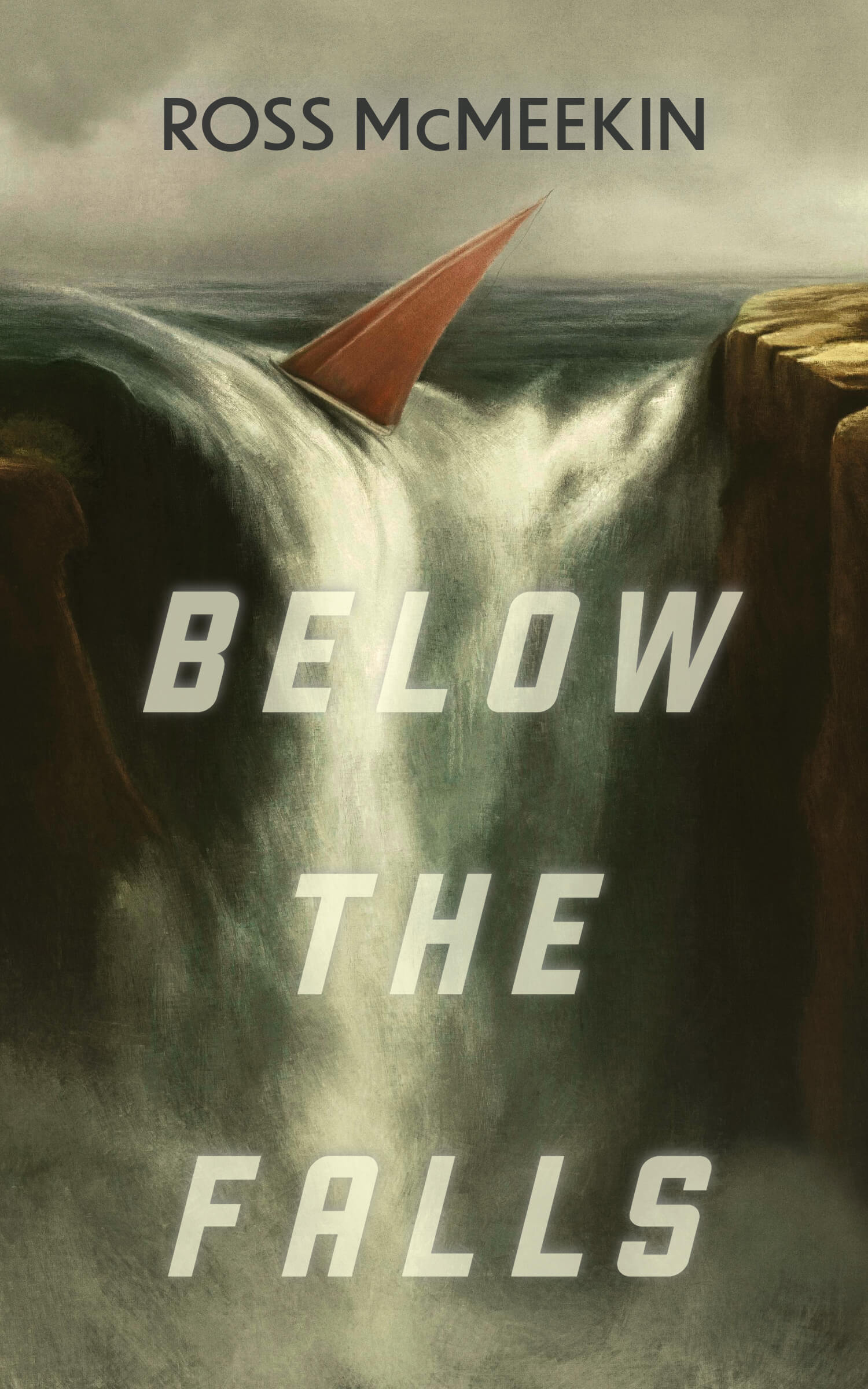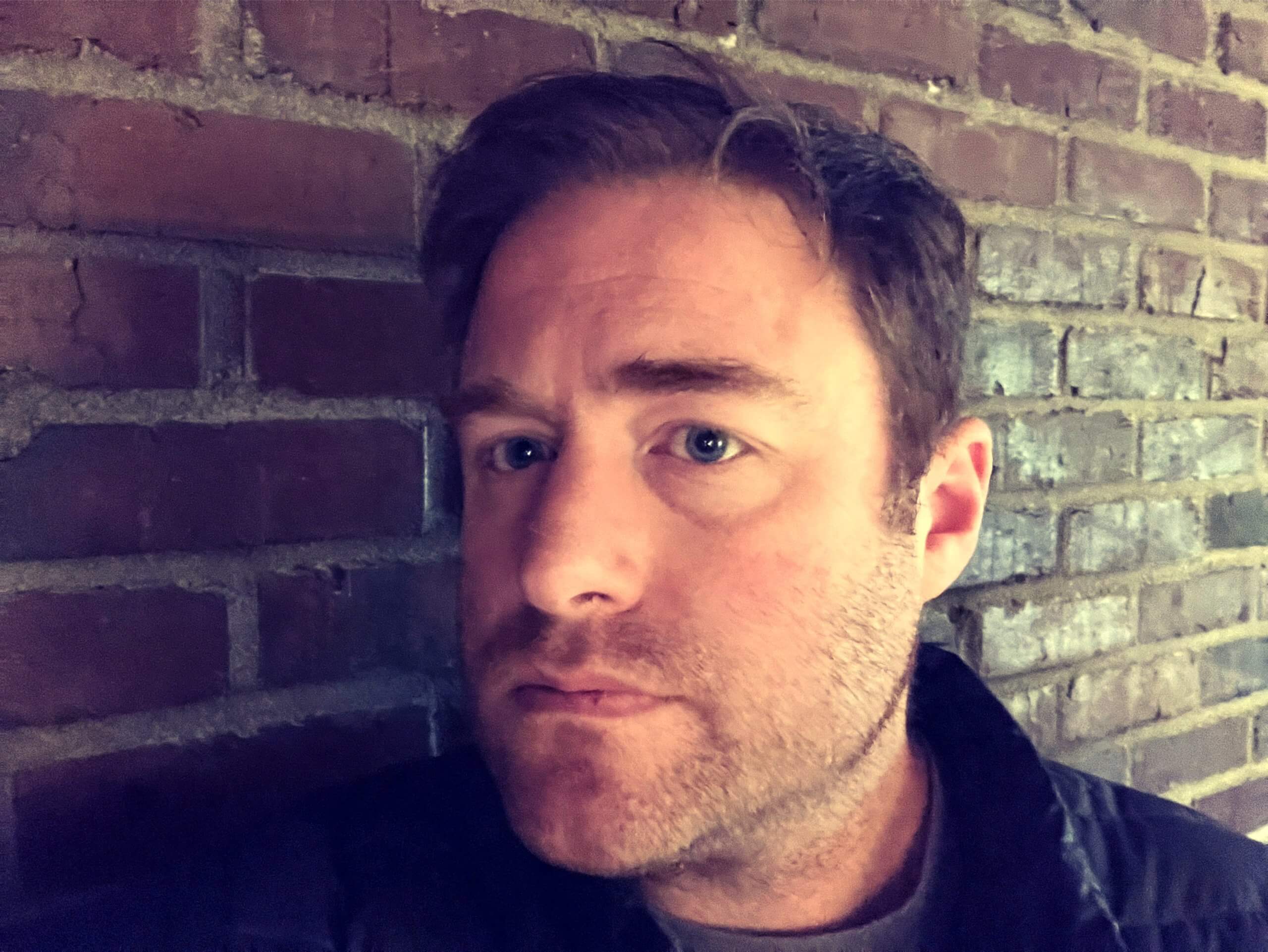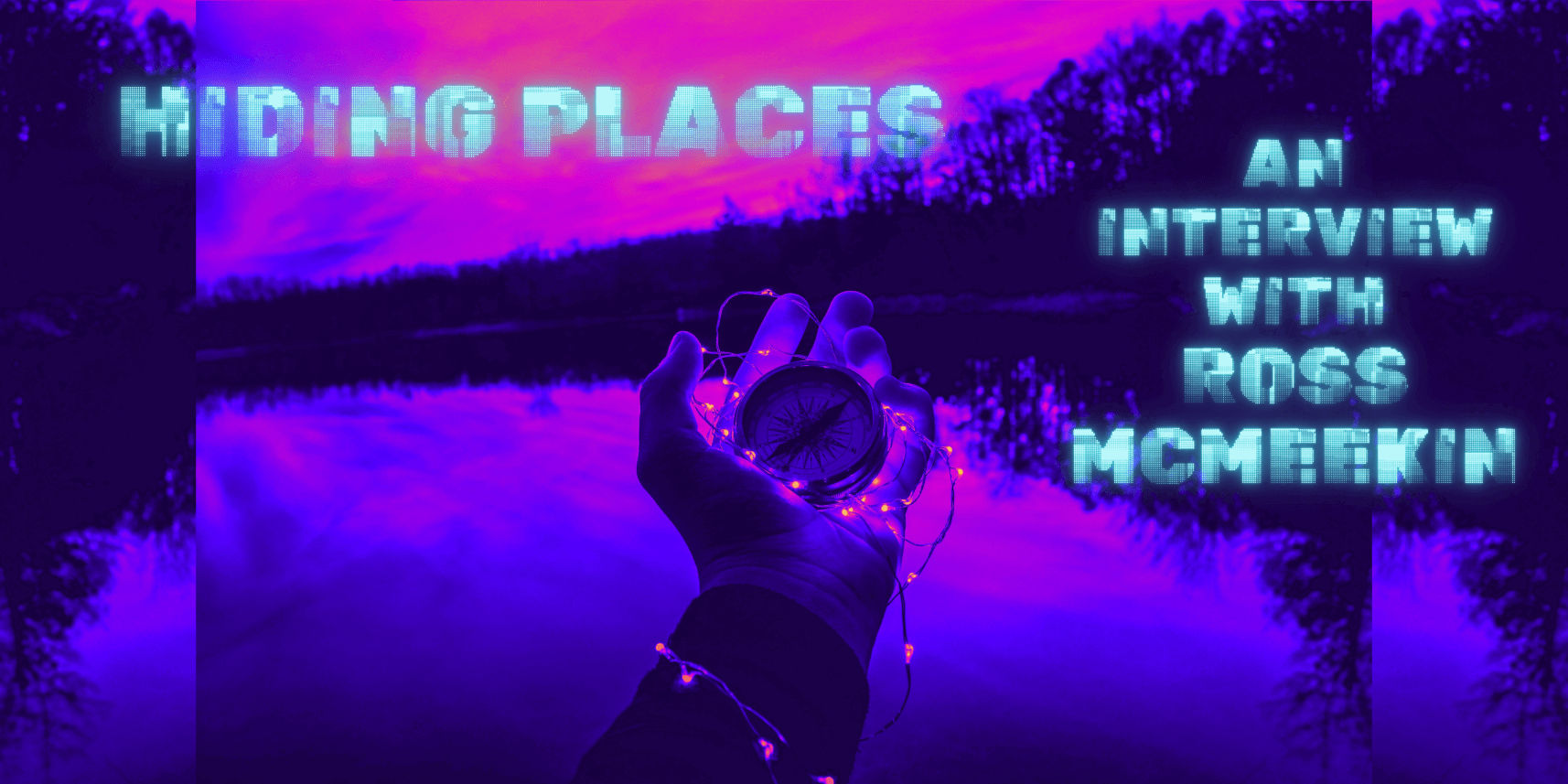 There is a quiet ungovernability at work in the short stories of Ross McMeekin, the sense that a repressed tempestuousness awaits beneath the surface. The threat that this wellspring could overflow defines his most recent collection Below the Falls (Thirty West, 2024). From small towns where secrets reside on the outskirts, to rural backwaters heavy with damaged inheritances, McMeekin’s work visits the unmoored and restless. A fragmented America appears, fleeting as a passing rearview mirror reflection, at once unknowable and profoundly familiar. I spoke to the author about the book.
There is a quiet ungovernability at work in the short stories of Ross McMeekin, the sense that a repressed tempestuousness awaits beneath the surface. The threat that this wellspring could overflow defines his most recent collection Below the Falls (Thirty West, 2024). From small towns where secrets reside on the outskirts, to rural backwaters heavy with damaged inheritances, McMeekin’s work visits the unmoored and restless. A fragmented America appears, fleeting as a passing rearview mirror reflection, at once unknowable and profoundly familiar. I spoke to the author about the book.
Rebecca Gransden: Depictions of nature, wild landscapes and rural life dominate several of the stories featured in the collection. When thinking about location and sense of place, how much does your own experience come into play? What type of environments defined your formative years, and in what way have they impacted your work?
Ross McMeekin: Two early formative experiences that influenced this collection are in the stories, “Fit to Scale,” and, “Waves Crash into the Water That Becomes Them.” They’re set in the Seattle proper of my youth, in the 80s and 90s before the technological boom changed the city so dramatically—and both explore young boys whose innocence is being taken away alongside the environment they grew up in. In the same way, settings in the natural world, like those in, “Below the Falls,” and “Switchback,” draw their inspiration from the decades I’ve spent fishing, hiking, photographing, and exploring here in the Pacific Northwest. I’ve spent my life being pulled toward both the city and the wild, and I try to accommodate both urges.
That said, I believe those settings are removed from my direct experience, even ones—like the alpine lake in “Switchback”—which are set in places I visit on a regular basis. They’re filtered through my imagination to become other places altogether. I believe we create worlds in stories that are built on experience and imagination, the latter of which is fed not just by directly experiencing something, but by experiencing expressions of those sorts of places, whether through photographs, films, books, and so on—as well as the visions that come seemingly out of nowhere to populate our minds. When I think of setting, I like using the word figment, because it’s defined as something that a person believes to be real, but only exists in their imagination. I’m of the belief that the environments in these stories are real, even when they’re not drawing solely from direct, lived experience.
RG: How did you decide upon which stories to include in the collection?
 RM: The stories were written over the course of about fifteen years, during which I moved three times to very different environments, so initially when I sat down to find clear ties between themes, locales, and characters, it was difficult. A person’s preoccupations and interests inevitably change over that long of a period, so at first glance, there was—for me—a sense of disconnection. I wondered whether I was building a collection that resembled more a greatest hits album than one made cohesively at one particular time.
RM: The stories were written over the course of about fifteen years, during which I moved three times to very different environments, so initially when I sat down to find clear ties between themes, locales, and characters, it was difficult. A person’s preoccupations and interests inevitably change over that long of a period, so at first glance, there was—for me—a sense of disconnection. I wondered whether I was building a collection that resembled more a greatest hits album than one made cohesively at one particular time.
It didn’t come together until I decided to organize it, for lack of a better word, intuitively. I knew that I wanted the title story to come first, so I laid out all my stories and decided, by feeling, or my gut, or intuition, or whatever it might be called, which one should come next, leaving a lot of stories out. Only later did I begin to see the through-lines linking the collection together. In that way, organizing it served as a discovery process where I was able to see not just the links in my own work that I didn’t realize were there before, but the common themes I’ve been exploring through these fifteen years without realizing it.
RG: A major theme that is returned to throughout the collection is that of generational tensions. You address the miscommunications that can occur, the crossed wires and clash of expectation, especially between fathers and sons. What leads you to address this theme, and how do you view your approach to it?
RM: I think that generations clash—in part—because deep down the parties involved want so badly to be connected. That, for me, is a desire that underpins generational conflict. The title story wouldn’t exist if the father and son didn’t want to be close to each other. I’m not the first to say this, but different generations aren’t simply older or younger than each other, they have experienced—and are often still experiencing—a different culture altogether. Community between generations is, in some ways, cross-cultural. As both a son and a father, there’s a deep-seeded desire in me to meaningfully connect with the members of my family—and I think that drives me to write about generational conflict. I also think that part of what drives this desire is the ways that I’ve failed at doing so in my own life. I feel the sorrow that comes with it and am compelled to express it, and hopefully, in the future, redeem it.
RG: You deal with heavy themes, and your characters struggle with various despondencies, disconnections, and dissatisfactions with where they are in life. These are ordinary lives trying to handle moving on from difficult pasts, or bottling feelings beneath the surface. I was particularly intrigued by the concept of ‘hiding’ in relation to your work. In what ways do your characters ‘hide’?
RM: I’ve never thought about this collection through that lens—that notion of hiding makes a lot of sense. There are so many reasons to hide. Shame. Preserving the innocence of others. Consequences, socially and otherwise. Confusion. What one is hiding and why they are doing so is sometimes undefined—especially in youth. When a person doesn’t know how to define or understand a part of themselves, it can be terrifying to bring it to the surface, because exposing it creates a lack of control that can be too much to bear, at least not yet.
In, “Waves Crash into the Water That Becomes Them,” the father hides from his son his past life as a hippy, and his latent desire to become a monk and shape surfboards. The reasons for this are explored but never directly answered. There’s a quote from the story that I’m fond of, made by the father’s son: “There’s who a person wants to be, and who they are, and in some lives those two through lines can’t ever intersect, because so much of their meaning comes from not being the other.” The father hides what he can’t reconcile because, I think, he wants to control how he is viewed, and not run the risk of being misunderstood. Yet hiding ensures that he won’t be understood. That’s the rub.
RG: “Fit to Scale” features model hobbyists. Have you ever had a hobby, and if so has your involvement with it influenced your writing?
RM: I’ve spent a lot of time on rivers, which has influenced my writing both in this collection—particularly in the title story—but also in stories that weren’t included. Fly-fishing has been a hobby of mine for almost thirty years, since I was a teenager with a twenty-dollar rod and reel from Fred Meyer, and it has taken me in a lot of fascinating directions. When a person goes deeply into fly fishing, it will inevitably lead them into the minutiae of the natural world, to understandings of entomology, aquatic habitats, river and seasonal patterns, and so on. For example, there is a prodigious hatch of a particular caddis fly that starts in late March on a river I won’t name, and the hatch lasts about a month, then stops until the next year. During that time, the trout in the river will feed primarily on those particular insects, so if you want to catch trout, it helps to know about the flies and the artificial patterns that imitate them.
This can pull a person into history. As you’re choosing an artificial fly, do you use the current one that perfectly matches the particular color, size, wings, and tail of the fly currently hatching on the river, or do you throw a variation on a two-hundred-year-old fly pattern like the Coachman, which could imitate many flies, and is sometimes more effective than the perfect match?
Finally, delving into a hobby births metaphors about life. How many times has the nature of a river been used to describe a reality? Countless. To your example from the collection, “Fit to Scale,” uses model kits as a metaphor. While I was growing up, my mother worked at a small bookstore near our home—Kay’s Bookmark—just across the way from Don’s Hobbies, one of those magnificent mom-and-pop stores where model kits, Estes rockets, figurines, landscapes, paints, decals, and so on were crammed haphazardly up to the ceiling and into every nook and cranny of the place. You didn’t just shop there—you explored. Don’s was the inspiration for the hobby shop in the story. I put together a lot of models from there as a young boy—and in the story they serve as a metaphor for the ways in which we’re encouraged to fit into a manufactured mold of what has come before, whether it fits or not.
RG: I found “The Meme” a percipient exploration into the complexity of human relationships. Could you talk about the examination of cruelty found in this story?
RM: Like the title story, an aspect of, “The Meme,” is how it explores the phenomena that belonging to some communities requires a person to endure cruelty at the hands of those in power in order to retain membership. I’m far from the first to say this, but cruelty creates a bond between two people; no matter how terrible, there’s a bond. In that way, communities are self-selecting. What are you willing to endure to be a part of something? An easy example would be a fraternity or sorority that employs hazing rituals, but I believe it exists to a certain extent in every organization, even in churches, a community, “The Meme,” explores. There’s a sense of moral power, and uprightness can protect pastors from the consequences of what they’ve done and are doing to others. People give those in power the benefit of the doubt because they want to belong to a community, sure, but also because there’s a belief that the person who’s doing the abuse is benevolent, well-meaning, despite evidence to the contrary.
For this reason, the main character of, “The Meme,” has to undergo a questioning of both himself and his pastor to decide whether he’s being bullied, or that the bullying is just a sign that he has become closer to the pastor than he thought he was—which he sees as a good thing. It’s the pandemic, he’s isolated, he’s lonely, he’s desperate for community, and dependent on the church. The pastor bullies his other friends…does that mean the main character is now his friend, which is what he wants? The question doesn’t become just whether the cruelty is worth suffering, it’s whether the cruelty is cruelty at all.
RG: For those unfamiliar with your work, what story featured in the collection would you recommend as a good introduction?
RM: “Togetherness” is a story in which two families find themselves at odds with each other because both chose a different path for their children through the pandemic—each seeking what was best for their children. One accepts the isolation order and remains at home, the other secretly builds a community pod that employs a teacher and never reveals this until after the fact. The one who chose isolation feels betrayed, but feels the need to keep quiet about it, so as to preserve future opportunities for his daughter with her group of friends.
I think that, for parents, the pandemic courted inequity and fostered exclusivity of relationships like nothing that had happened before, at least in my lifetime. One of the themes of this collection is how good intentions are sometimes the very things that create problems—they can be the source of complications and inequity. The idea of a strict protagonist vs. antagonist is foiled, and what’s left is a sense of helplessness, because the only way to preserve community is through sacrifice, which can so often lead to one side gaining privilege over the other. It’s often unfair, not equal or balanced. What results is a tragic circumstance without a clear cut bad actor.
RG: As you prepare for the book’s release, what are your reflections? Are you thinking beyond it to what is next for you?
RM: As I reflect, I come back to how fortunate I am to have a book come out. This sort of thing is never a guarantee. Working with Thirty West has been such a rewarding experience. And yes, I’m always thinking beyond it. I’ve found that continuing to work on new creative work during the journey towards publication is grounding for me. Writing, for me, is a way to find a sense of place in my own life (as is reading). Story is a way that I can situate myself in a world that so often feels chaotic and unpredictable.

